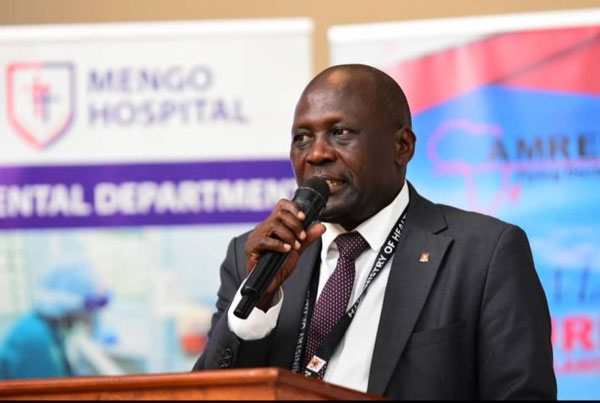
Kampala, Uganda | THE INDEPENDENT | While private health providers are the first point of care and offer services to more than 50 per cent of the population, the Ministry of Health reveals that what happens in these facilities is not accurately tracked because many do not contribute data to the Health Information System.
All hospitals irrespective of whether they are owned by the government or not are required to report patient-based data to the data system housed at the district. But Dr Tom Aliti, the Commissioner in charge of partnerships in the Ministry of Health says that only 35 per cent of private hospitals are contributing patient-related data to the system.
But Aliti says that even at the level of the Ministry private hospital administrators never attend monthly meetings meant to check areas of need and where government and the private sector can partner to make service delivery better. This, he says, does not only skew their analysis and final decision-making but means that the Ministry cannot give an exact picture of the country’s health indicators.
Dr Aliti was speaking during the Private Health Sector Convention, an annual meeting organized by the Uganda Healthcare Federation (UHF) to among others assess the performance of private health providers,
Aliti was speaking just after an assessment report done by the United States Agency for International Development (USAID) revealed gaps in the maintenance of Infection Prevention and Control (IPC) measures in especially lower-level private health facilities in Kampala.
According to Louis Bayo, a member of the team that conducted the assessment, they assessed 2,137 health facilities during the Ebola viral disease outbreak to establish the readiness of these facilities to handle highly infectious diseases and found major gaps in the majority of them.
He says that later on, they used a scorecard approved by the Ministry of Health to do a follow-up assessment on 7,696 facilities across the five divisions of Kampala and only 42 per cent had the required IPC measures in place. When it comes to lower private facilities at the level of Health Center II, only 2 per cent were performing well and yet these are the ones most frequented by the population.
Commenting about these concerns, Grace Kiwanuka the Executive Director of UHF, which is the umbrella body that brings together private providers says conducting disease surveillance requires hospitals to be supported with training and access to materials they would need to collect the data but these are mainly provided to government hospitals and the Private – Not –for profit hospitals.
She also notes that while the assessment finds lower-level health facilities to have major gaps, they are run by technical people, although these are not consistently retooled to be up to date with the changes in the health sector. She says the federation has since recognized this challenge and is currently conducting monthly virtual meetings to share knowledge on the latest developments in the centre.
For now, however, Aliti says these assessment results have been shared with the private providers to help them re-organize themselves but if nothing changes, he says some of them will be closed.
*****
URN


